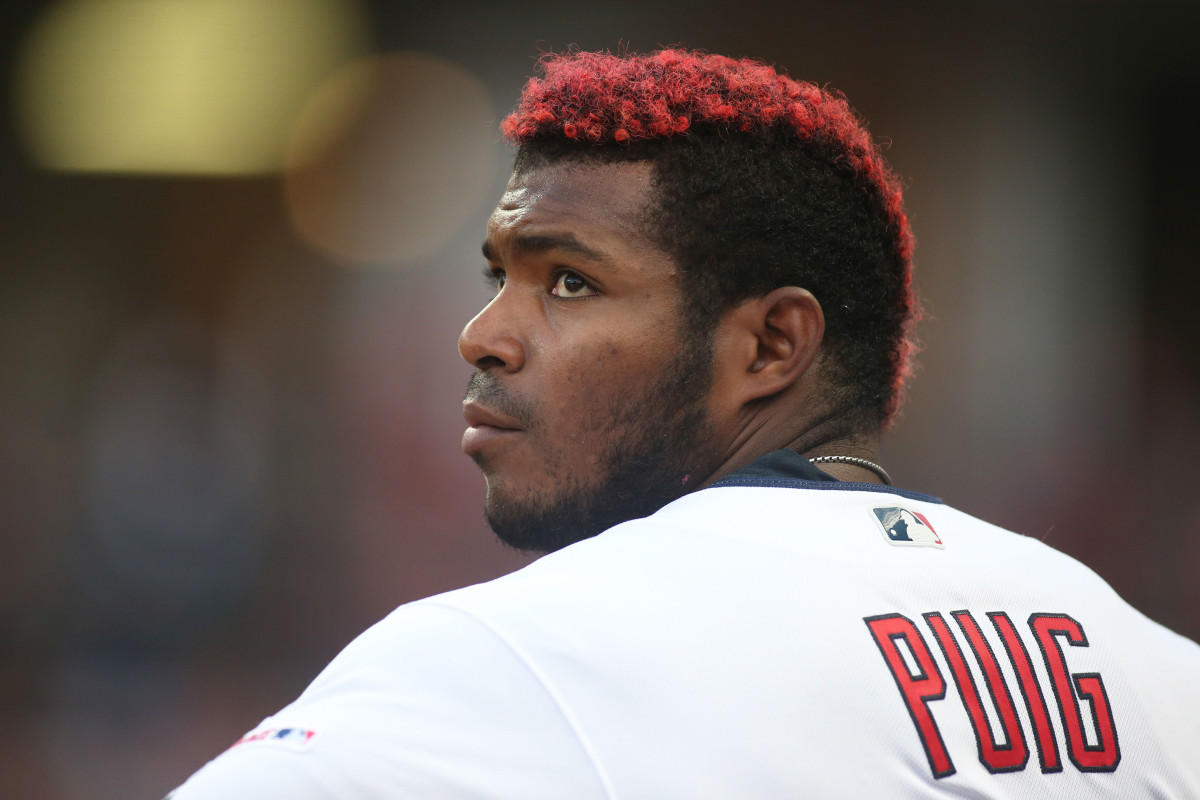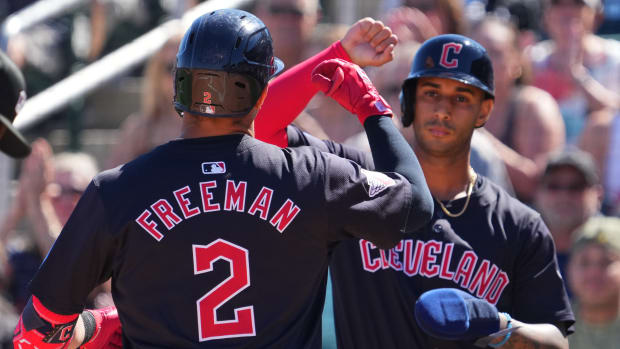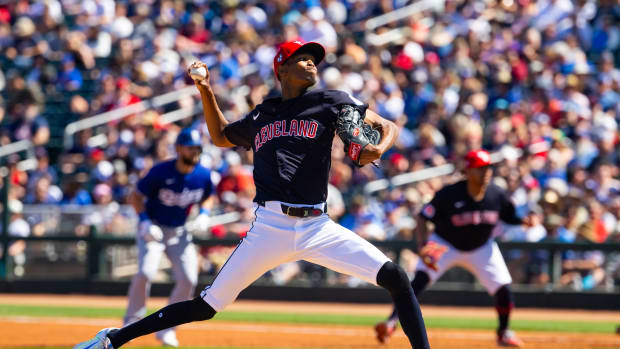How Much of an Upgrade is Yasiel Puig Over Daniel Johnson in the Indians Lineup?

Assigning dollars per win above replacement is a messy enterprise. Doing so serves a purpose, or else people would not write entire articles on the topic. Taking the game’s primary measure of performance relative to the league and dividing it by the only source of compensation is literally the reason Marvin Miller was just elected to the Hall of Fame.
There is more nuance to the conversation than saying “Player X is worth X WAR and made X dollars as opposed to Player Y, worth Y WAR and Y dollars. Do the math and find the excess value.” Granted, this exercise will give you plenty of the picture, especially when dealing with a free agent compared to a minor leaguer on the brink of promotion.
Most of that picture is in regard to money, whereas at some point, the rookie-to-be will be worth far more than the free-agent due to their suppressed rookie salary. So when the Cleveland Indians consider re-signing Yasiel Puig, the idea is not so simple as to realize the team needs an outfielder, Puig would be better than prospect Daniel Johnson in 2020, and make a decision on whether to meet the veteran’s asking price.
Puig has been worth between 1.2 and 1.8 fWAR in the past two seasons and is projected at 1.8 again by the Steamer projection system - 2.0 when normalized to Steamer600, or 600 plate appearances, a number he surpassed only last year and in 2014. According to Steamer600, Johnson would be worth 0.8 WAR in a full season, while Triple-A outfielder Ka’ai Tom worth 0.9, and major leaguers Jake Bauers and Oscar Mercado at 1.0 even.
Obviously, Puig is an upgrade over this group, but by just 1.2 WAR at most, if Steamer is your projection system of choice. By more recent, conservative estimates of $/WAR, that would make Puig worth between $6-7.2 million in 2020, or about $5.45-6.64 million more than Bauers in his first full season last year.
The question then becomes, what does Puig give you that one of the others does not? First, it gives the organization depth, something they technically have, though it mostly lacks quality. By proxy, that would move Bauers to the other corner outfield spot to platoon with Jordan Luplow. That in itself adds the upgrade of the Bauers/Luplow tandem over Tom or Johnson, and you can heap that surplus on top of the jump from Puig to Bauers.
Aside from WAR, what are you actually getting in Puig that the others will not? Mostly, right-handed hitting, something the team certainly lacks. Filling a split does not have an exact dollar amount to assign to it, but 72.3% of major league plate appearances came against righties last year, so the frequency makes that important on its own.
Compared to Johnson, the worst realistic option in this projected scenario, the question is whether or not that adds enough to justify the dollars. Of course, they are not your dollars, but they matter to someone. So, what else is there?
Steamer projects an .814 OPS for Puig over 600 plate appearances, and a .757 OPS for Johnson, higher than Tom, Bauers, and Mercado. Puig does project at a 111 wRC+, a considerable upgrade over Johnson (93) or Bauers (95).
Where Puig could make the biggest difference is defensively, having racked up 40 defensive runs saved over 6288 career innings in right field. If you believe in Statcast’s outs above average metric, however, the picture changes, as Puig has been worth -3 OAA over its four years of information. That accounts for his 18 DRS season in 2017.
What has always stood out about Puig is his arm, with a number of highlight reels dedicated to his throwing power online. Guess where Johnson thrives? The 5-foot-10 outfielder boasts an 80-grade arm. Fangraphs also rates Johnson as a 70-grade runner and an average, 40-grade fielder, with a 50 future grade.
As for the hitting splits against righties, Johnson swings left-handed and posted a .906 OPS against righties in 376 minor league plate appearances last year.
Johnson certainly has the potential to be as good a fielder as Puig, as soon as 2020. If the difference between he and Puig is .054 OPS or a 16-wRC+ swing, is the latter worth the extra $5-6 million he is projected to be worth? Technically, yes, but at what point that differences show up are unpredictable over 162 games. The eventual price point and how it climbs or falls over the length of the contract will affect the surplus on the front end, as well.
That extra money could be used to sign a reliever, extend Mike Clevinger, or improve the right-field upper deck at Progressive Field. It could be used to sign Puig.
With everything in mind, the Indians front office will assign a dollar amount to what that upgrade will be, and stand by it. According to MLB.com’s Mandy Bell, that number could be slightly higher than the figures here.





